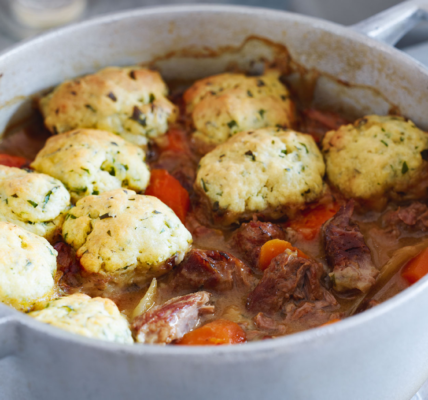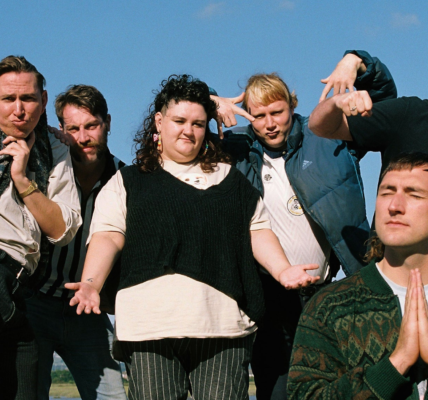Maracas, often referred to as “maracas maracas” in playful or repetitive online searches, are one of the most iconic percussion instruments in the world. These handheld, rattle-like instruments are synonymous with Latin American music, particularly genres like salsa, merengue, and cumbia.
Their distinctive sound created by shaking dried seeds, beads, or other small objects inside a hollow shell has made them a staple in musical traditions across the globe. But maracas are more than just a musical tool; they are a cultural artifact with a rich history and a vibrant presence in modern media, including platforms like YouTube, where their popularity continues to grow.
This article delves into the fascinating world of maracas, exploring their origins, cultural significance, construction, and their surge in popularity as reflected in recent Google and YouTube trends. We’ll also address common questions people are asking online, from how to play maracas to their role in contemporary music and digital content creation. By examining the latest information available, this comprehensive guide aims to inform and engage readers about the enduring appeal of maracas.
Ancient Roots in Indigenous Cultures
Maracas trace their origins to indigenous cultures in Latin America, particularly among the Taino, Arawak, and other native peoples of the Caribbean, Central, and South America. Archaeological evidence suggests that rattles similar to modern maracas were used in rituals and ceremonies as early as 500 BCE. These early instruments were often made from natural materials like gourds, calabashes, or turtle shells filled with seeds, pebbles, or dried beans.
The Taino people of Puerto Rico, for instance, crafted maracas from the fruit of the higuera tree, a type of gourd that naturally hardens when dried. These instruments were used in spiritual ceremonies, dances, and storytelling, serving both musical and symbolic purposes. The sound of the maraca was believed to connect the physical and spiritual worlds, making it a powerful tool in indigenous rituals.
Evolution in Latin American Music
As European colonizers arrived in the Americas, maracas were integrated into new musical forms that blended indigenous, African, and European influences. By the 19th century, maracas had become a key component of Afro-Latin music genres such as son, rumba, and salsa. In Cuba, for example, maracas were paired with other percussion instruments like bongos and congas to create the rhythmic foundation of dance music.
The instrument’s versatility allowed it to spread beyond the Caribbean. In Venezuela, maracas are central to joropo music, a lively genre that reflects the country’s llanero (plains) culture. In Colombia, they are integral to cumbia, a genre that has gained global popularity. Over time, maracas became a symbol of Latin American identity, representing the fusion of diverse cultural influences.
Maracas in the Global Music Scene
By the 20th century, maracas had transcended their regional origins, appearing in jazz, pop, and even classical music. The rise of Latin music in the United States during the mid-20th century, fueled by artists like Tito Puente and Celia Cruz, brought maracas to mainstream audiences. Today, maracas are used in a wide range of musical genres, from reggaeton to world music, and their distinctive sound is instantly recognizable.
Modern Manufacturing
In modern times, maracas are also mass-produced using synthetic materials like plastic or fiberglass. These materials allow for greater durability and consistency in sound but may lack the unique character of handmade maracas. Some manufacturers, however, strive to preserve traditional craftsmanship, offering artisanal maracas made with natural materials.
The choice between traditional and modern maracas often depends on the musician’s preference. Professional percussionists may opt for handmade maracas for their authentic sound, while beginners or casual players might choose affordable, mass-produced versions.
The Role of Maracas in Music
Maracas are primarily rhythmic instruments, providing a steady pulse or accentuating specific beats in a musical composition. They are typically played in pairs, with one maraca held in each hand. The player shakes the maracas in a controlled manner, creating a sharp, crisp sound that complements other percussion instruments.
In genres like salsa, maracas often play a syncopated rhythm, adding texture and energy to the music. In joropo, they mimic the galloping rhythm of horses, reflecting the music’s cultural roots. The versatility of maracas allows them to adapt to various tempos and styles, making them indispensable in many ensembles.
Symbolism in Performance
Beyond their musical function, maracas carry symbolic weight in performances. In Latin American dance traditions, maracas are often used by dancers as well as musicians, adding a visual and auditory element to the performance. Their bright, lively sound evokes celebration and joy, making them a favorite in festivals and cultural events.
The Rise of “Maracas Maracas” Searches
Recent Google Trends data indicates a growing interest in maracas, with the phrase “maracas maracas” appearing in search queries, particularly in relation to YouTube content. This repetitive phrasing likely stems from the playful or mnemonic way people refer to the instrument, as well as its prominence in online tutorials, performances, and viral videos.
According to Google Trends, searches for maracas have spiked in 2024 and 2025, particularly in regions like the United States, Latin America, and parts of Europe. This surge aligns with the increasing popularity of Latin music genres and the growing influence of social media platforms like YouTube, where maracas are featured in tutorials, music videos, and cultural content.
Maracas in Popular Culture
Maracas in Film and Television: Maracas have made their mark in popular culture, appearing in films, TV shows, and commercials. In animated movies like Coco (2017), maracas are featured in scenes depicting Mexican musical traditions, reinforcing their cultural significance. On television, shows like Dancing with the Stars often incorporate maracas into Latin dance routines, adding an authentic flair.
Maracas in Social Media and Memes: On platforms like YouTube and TikTok, maracas have become a source of humor and creativity. Viral videos often feature people shaking maracas in exaggerated or comedic ways, contributing to the “maracas maracas” trend. These videos, while lighthearted, have helped introduce the instrument to younger audiences and non-musicians.
Maracas in Education: Maracas are also popular in educational settings, particularly in music classes for children. Their simplicity and affordability make them an excellent tool for teaching rhythm and coordination. YouTube channels like “Kids Music” offer maraca-based activities for young learners, further boosting the instrument’s visibility.
The Cultural Significance of Maracas
A Symbol of Latin American Identity: Maracas are more than just musical instruments; they are a symbol of Latin American heritage. In countries like Puerto Rico, Cuba, and Venezuela, maracas are deeply tied to national identity and cultural pride. Festivals, such as Puerto Rico’s Fiesta de Santiago Apóstol, often feature maraca performances, celebrating the instrument’s role in community traditions.
Preservation of Indigenous Traditions: Efforts to preserve indigenous music and craftsmanship have brought renewed attention to maracas. Organizations and artisans in Latin America are working to maintain traditional maraca-making techniques, ensuring that the instrument’s cultural roots are not lost to modernization.
Maracas as a Global Phenomenon: While maracas are rooted in Latin American culture, their global appeal is undeniable. From African drumming ensembles to European folk bands, maracas have found a place in diverse musical traditions, symbolizing the power of music to transcend borders.
The Future of Maracas
Innovations in Design: Modern instrument makers are experimenting with new materials and designs to enhance the maraca’s sound and durability. For example, some companies are developing maracas with adjustable fillings, allowing musicians to customize the tone. Others are incorporating eco-friendly materials to appeal to environmentally conscious consumers.
Maracas in Digital Music Production: In the realm of digital music production, maracas are being sampled and incorporated into electronic music and hip-hop beats. Software like Ableton Live and FL Studio includes maraca sound libraries, enabling producers to add authentic Latin rhythms to their tracks.
Continued Popularity on YouTube: As YouTube continues to evolve, maraca-related content is likely to grow in prominence. The platform’s emphasis on category-specific charts and trending topics ensures that niche instruments like maracas will remain visible to global audiences. Additionally, the rise of virtual reality (VR) and augmented reality (AR) content could lead to immersive maraca tutorials and performances, further engaging viewers.
FAQs
How do you play the maracas?
Hold one maraca in each hand, typically by the handle. Shake them rhythmically, either side to side or up and down, matching the beat of the music. The shaking causes the beads inside to strike the walls, creating the signature sound.
Can Maracas be used in modern music genres?
Absolutely! While maracas have traditional roots, they have been embraced in various contemporary music genres. Artists incorporate maracas in pop, rock, jazz, and even electronic music to add unique rhythmic elements.
What are Maracas used for?
Maracas are primarily used to add rhythm and texture to music. They are common in genres like salsa, merengue, cumbia, and reggae. Beyond music, maracas are also popular in children’s education for teaching rhythm and coordination.
What is the origin of Maracas?
The term “maraca” is believed to originate from the Guarani word mbaraca. While some sources suggest an Arabic influence, the exact etymology is debated. Maracas have ancient roots, with indigenous peoples in South America using them in rituals and ceremonies. Over time, the instrument spread across the Americas and beyond, adapting to various musical traditions.
How do you play Maracas?
To play maracas, hold one in each hand with a relaxed grip. Shake them rhythmically to produce sound. The movement can be side-to-side, up-and-down, or in circular motions, depending on the desired rhythm. It’s essential to maintain a loose wrist and arm to achieve a smooth, consistent sound.
In Summary
The maraca, with its humble origins and vibrant sound, has carved a unique place in the world of music and culture. From its roots in indigenous Latin American traditions to its modern-day presence on platforms like YouTube, the maraca continues to captivate audiences worldwide. Google and YouTube trends reveal a growing curiosity about this instrument, with people seeking to learn how to play it, understand its history, and incorporate it into their creative projects.
Whether you’re a musician, a cultural enthusiast, or simply curious about the “maracas maracas” phenomenon, this instrument offers a rich tapestry of history, craftsmanship, and rhythm. As maracas continue to evolve and inspire, they remind us of the power of music to connect people across time and place. So, pick up a pair of maracas, shake them to the beat, and join the global celebration of this timeless instrument.
To read more, Click Here .


